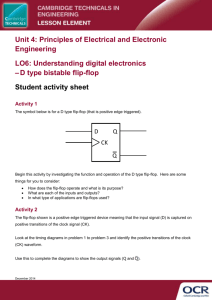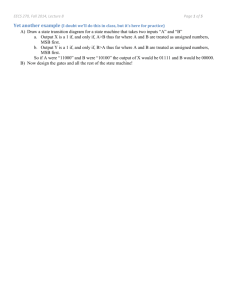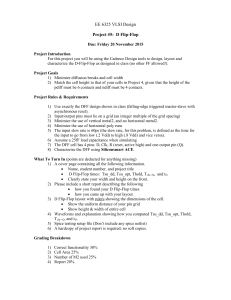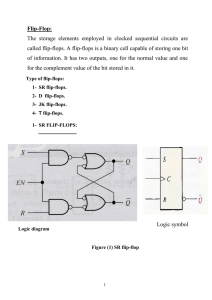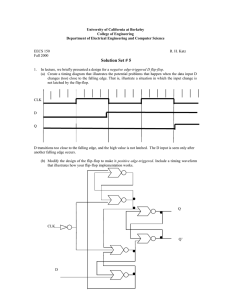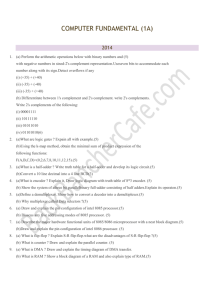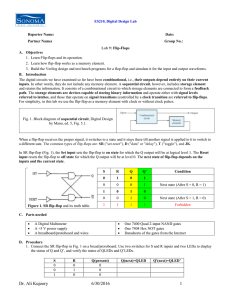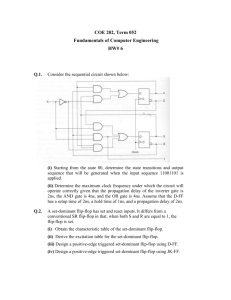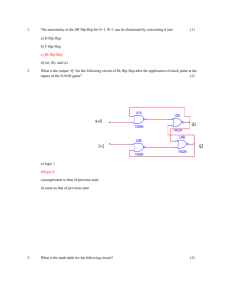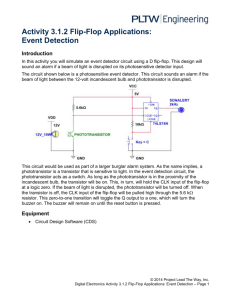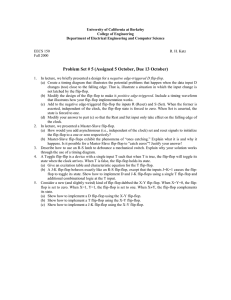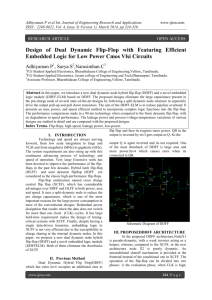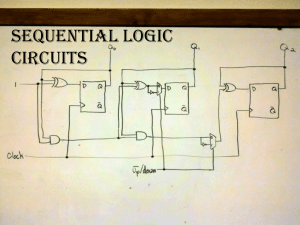Example_2004
advertisement
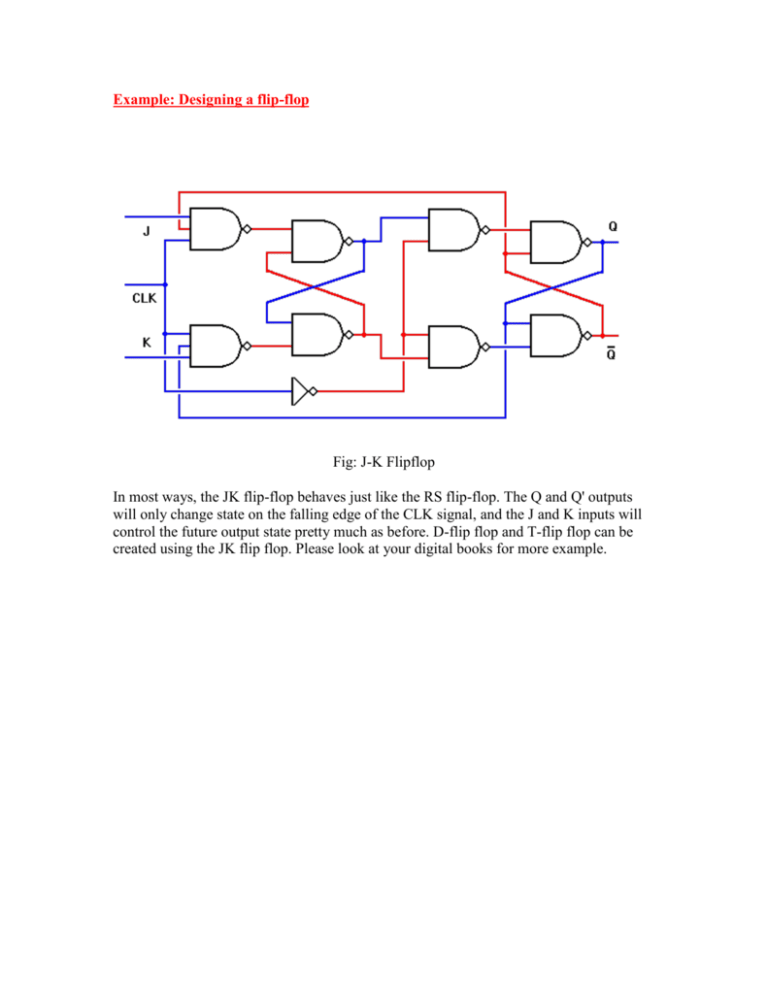
Example: Designing a flip-flop Fig: J-K Flipflop In most ways, the JK flip-flop behaves just like the RS flip-flop. The Q and Q' outputs will only change state on the falling edge of the CLK signal, and the J and K inputs will control the future output state pretty much as before. D-flip flop and T-flip flop can be created using the JK flip flop. Please look at your digital books for more example. Example: Designing a Counter States Count The truth table of 4-bit counter is shown. To determine the gates D C B A required at each flip-flop input the truth table for all states of the 0 0 0 0 counter is shown to the right. Looking first at output A, we note that it must change state with every input clock pulse. Therefore, we could use a T flip-flop here if we wanted to. We won't do so, just to make all of our flip-flops the same. But even with JK flip-flops, all we need to do here is to connect both the J and K inputs of this flip-flop to logic 1 in order to get the correct activity. Flip-flop B is a bit more complicated. This output must change state only on every other input clock pulse. Looking at the truth table again, output B must be ready to change states whenever output A is a logic 1, but not when A is a logic 0. If we recall the behavior of the JK flipflop, we can see that if we connect output A to the J and K inputs of flip-flop B, we will see output B behaving correctly. Continuing this line of reasoning, output C may change state only when both A and B are logic 1. We can't use only output B as the control for flip-flop C; that will allow C to change state when the counter is in state 2, causing it to switch directly from a count of 2 to a count of 7, and again from a count of 10 to a count of 15 — not a good way to count. Therefore we will need a two-input AND gate at the inputs to flip-flop C. Flip-flip D requires a three-input AND gate for its control, as outputs A, B, and C must all be at logic 1 before D can be allowed to change state. The resulting circuit is shown below. 0 0 0 0 1 1 0 0 1 0 2 0 0 1 1 3 0 1 0 0 4 0 1 0 1 5 0 1 1 0 6 0 1 1 1 7 1 0 0 0 8 1 0 0 1 9 1 0 1 0 10 1 0 1 1 11 1 1 0 0 12 1 1 0 1 13 1 1 1 0 14 1 1 1 1 15 Fig: A sample example of 4-bit counter using T flip flop (Here J and K are shorted & it works as T flip-flop)



